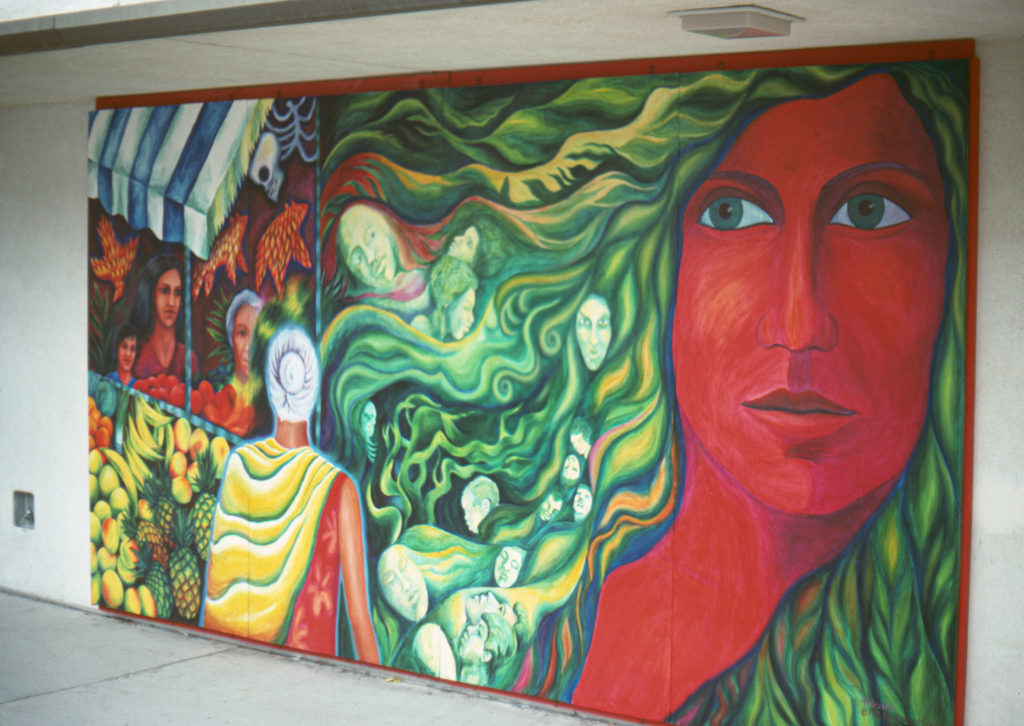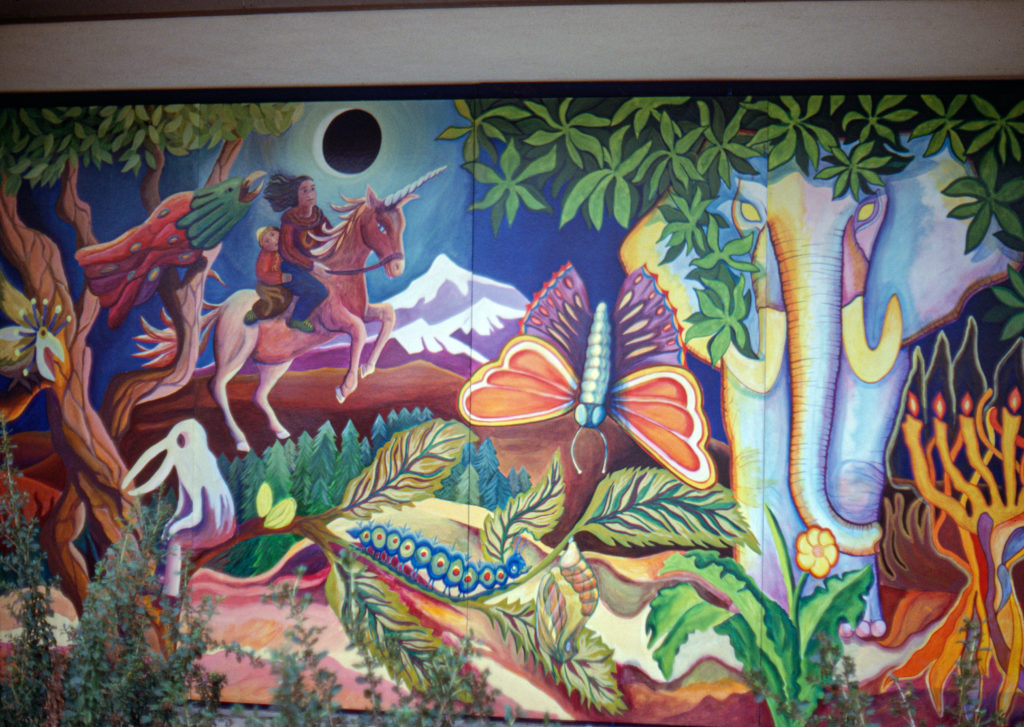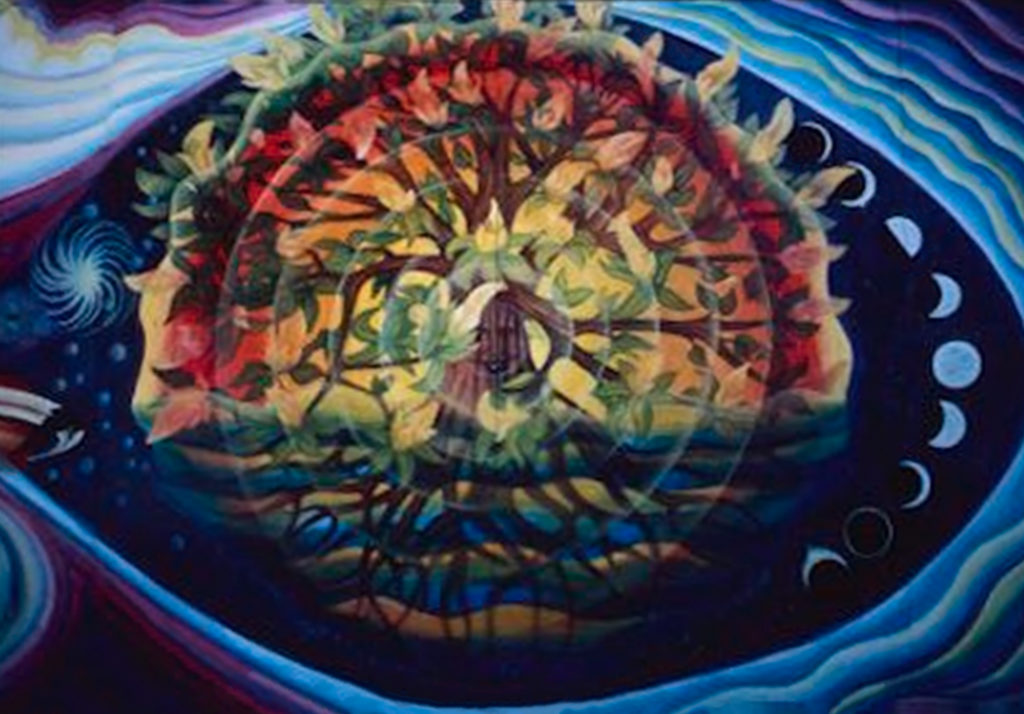Luis Martinez Cervantes (1923–2005) was an avant-garde sculptor, painter, and muralist. His parents met in Santa Barbara, where his mother was raised. His father migrated there from Michoacan after fleeing the Mexican Revolution. Cervantes was born in Santa Barbara in 1923, the oldest of six. The family moved to the Bay Area for better working conditions in the late 1920s. Initially, the family picked fruit in San Jose. Eventually, Cervantes’s father found work at a copper smelting plant in South San Francisco. The work proved grueling, but it afforded some stability, and later influenced Cervantes’s turn to sculpture. In 1936, his father passed away, and his mother returned to Santa Barbara, where Cervantes attended junior high and high school. After graduation, Cervantes moved to the Bay Area to find a union job. He worked in the Oakland shipyards for a year, until he was drafted into the U.S. Army Corps of Engineers in 1942. He spent most of his military service in Europe, including participating in D-Day and the Invasion of Normandy. After his discharge in 1945, he returned to San Francisco, where he worked as a custom mattress maker for McRoskey Airflex Mattress Co. (until he retired in 1992) and later married Rosa “Rosie” Castro of Santa Barbara. They had two children, Stephen and Lorna Dee (the poet), but after some years together, the marriage dissolved. In the early years of raising children, Cervantes returned to his love of drawing. He enrolled in art classes at San Francisco State College (ca. 1952) and met his mentor, Seymour Locks. He studied clay sculpture and later ceramics at the College of Marin (1957–59), gradually finding his way to the experimental arts community at San Francisco Art Institute (1960–62). Along with Ernie Palomino and Ron Davis, he opened a Mission District gallery that showed student work. The experience spurred Cervantes, Palomino, and Joe White to establish the New Mission Gallery in 1962, an avant-garde space that featured Manuel Neri, Joan Brown, Wally Hedrick, and others. When Palomino and White left the venture, Susan Kelk stepped in to help. Cervantes had met Kelk at the Art Institute, and after a short while, a romance bloomed that lasted the rest of his life. The couple had three children together, Luz de Verano, Suaro, and Monte. While Cervantes briefly participated in the start of Galería de la Raza and always identified as Mexican American, he also withdrew from the next generation’s emphasis on la Raza and Chicano art. He was proud of and inspired by his cultural heritage, yet he also felt free of it and determined to express his independent vision. He intended to express universal truths and to awaken consciousness. He pursued abstraction, mandalas, and the spiritual in art, and taught art at various Bay Area institutions. He showed his work at several major museums but was disinclined toward self-promotion. In 1977, Cervantes and Kelk Cervantes co-founded Precita Eyes Muralists, a nonprofit organization dedicated to collaborative mural-making and ultimately responsible for hundreds of Bay Area murals. Cervantes collaborated on many murals with Kelk Cervantes, including Family Life and the Spirit of Mankind (1977), The Cross of Quetzalcoatl (1981), Si Se Puede (1995) and three collaborative murals in Russia—in 1990, 1996, and 2003—and many more. Through his schooling, his teaching, and his art, Cervantes pushed social boundaries and helped break barriers for many artists to come.
Cary Cordova


